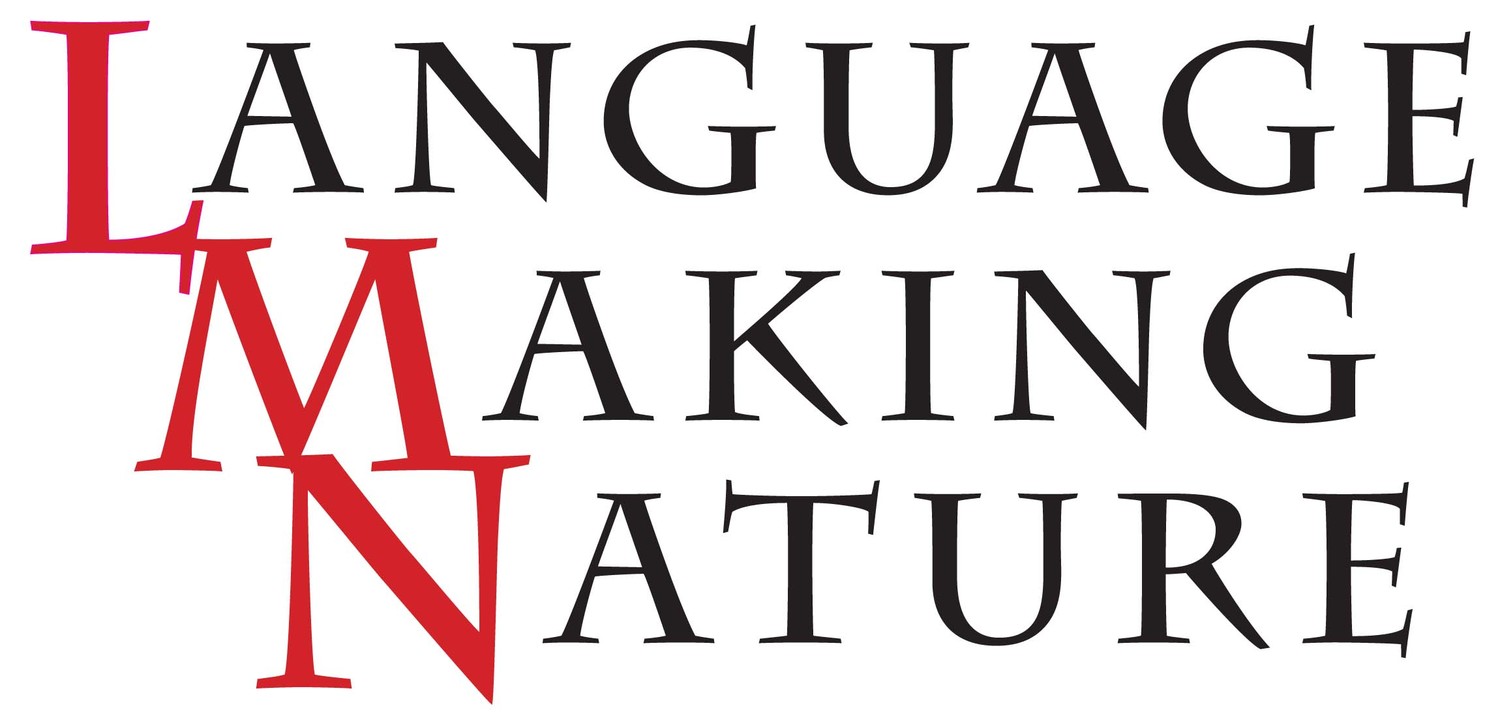Researched over many years and filled with ideas that have been thoroughly field-tested while hiking thousands of miles in wild areas, this new book will inspire unique insights into language and the natural world.
History of the Project
Many people know me as a naturalist, so this new book on language will come as a bit of a surprise and deserves some explanation. In fact, my love of language is inseparable from my love of the natural world and the idea for this book arose by a long, circuitous route from my lifelong studies of plants and animals and natural landscapes.
I started by memorizing pictures in field guides before I could even read, so in a very real sense images of the natural world have always been my first language. Later, when I could read, I memorized the text in field guides and memorized the common names of plants and animals.
I soon became curious about the funny-looking scientific names given to each plant and animal and I came to see these scientific names as puzzles, or passwords that could grant me entry into the exalted world of professional scientists. I had no concept of Greek or Latin history but I still learned how to break scientific names into their component parts so I could understand these words and pretend like I was already a scientist.
I spent my entire childhood intensely fixated on this dream of becoming a scientist, but that changed when I was 21 years old and spent a year in Borneo on a Harvard research team. It was there that I decided to instead become a writer so I could help translate the specialized research of scientists into articles and books for general audiences. I didn’t know the first thing about becoming a writer so I decided then that I would live and work with the famous, Pulitzer Prize-winning poet, Gary Snyder, and learn from him.
Audacious as it sounds that’s exactly what I did, and I was extremely fortunate to spend several years working with Gary. He didn’t exactly teach me how to write, but he showed me a model of what it meant to be a writer and he taught me how to think very, very carefully about the sounds, shapes, and meanings of words. Gary also introduced me to the Squaw Valley Community of Writers, one of the most prestigious writing programs in the United States, where I joined the staff and for over 20 years led nature walks for many of the country’s leading publishers, editors, agents, poets, and writers.
Leading walks at Squaw Valley was a profoundly influential experience because I learned firsthand that people are hungry for words that describe the natural world. And it was through the many poets and writers I had the pleasure of meeting at Squaw Valley that I learned these words could take on unexpected and delightful shades of meaning when used in their poems and essays.
These insights stuck with me and brewed in the background as I continued to lead walks in my career as a naturalist and author. My questions took on a deeper tone after I spent several months on a Formby Fellowship at Texas Tech University studying the archived papers of Barry Lopez and meditating on language, landscape, and human communities. I also started a habit of collecting unusual nature words and carrying the small and portable Dictionary of Word Roots and Combining Forms by Donald Borror so I could study word elements and explain words to people on my nature walks. I had an inkling of an idea about language making from reading Keith Basso’s award-winning Wisdom Sits in Places, but none of this made sense until I ran across Calvert Watkins’s How to Kill a Dragon and began thinking more deeply about how writers could start creating their own words to speak of the natural world.
Watkins’s sweeping survey of Indo-European poetics both fascinated and flummoxed me. He spoke of words and concepts and histories that felt like they reached into the very core of the human experience so I set out on a four-year quest to read every book I could find to help me understand Watkins, starting with the bibliography in his book and branching out from book to book until I unexpectedly realized that I was actually tracing the origins of the pieces and processes that went into shaping the English language we use today.
I began thinking of this investigation as something that might turn into a book so I started carrying drafts of ideas with me on long walks in wild landscapes and holding them up against the natural world to see which ideas resonated and which ideas took on a life of their own as the project began to take shape.
Language Making Nature is the result of those long walks and it is also the culmination of my many varied experiences as a naturalist, teacher, and author. These are ideas that I want to share with the writers, artists, and thinkers of my culture--as well as creative writing students and everyone with a passion for the natural world--in the hope that we can all work together to create new words, new relationships, and new visions for the future.
BOOK DESCRIPTION
- 76 sections
- 256 pages
- 5.5 X 8.5 inches
- Sewn Binding
- Printed in the United States



